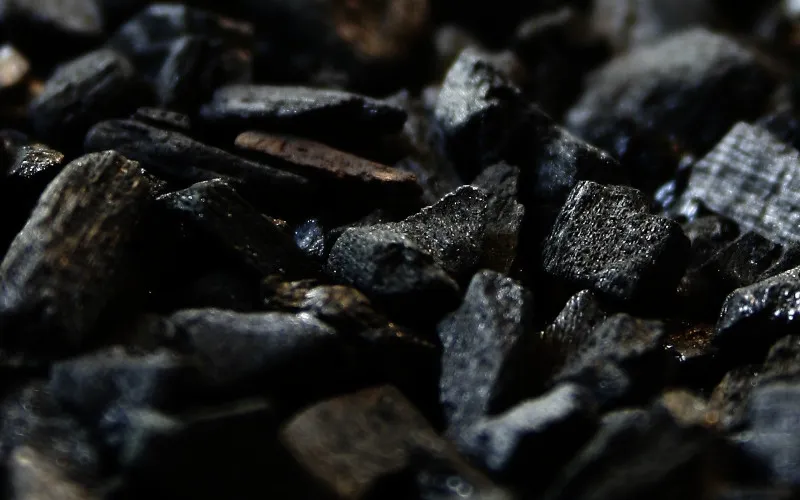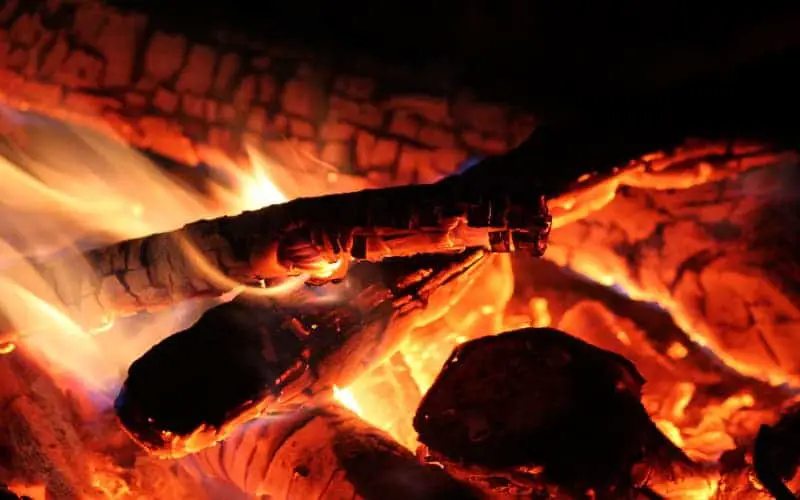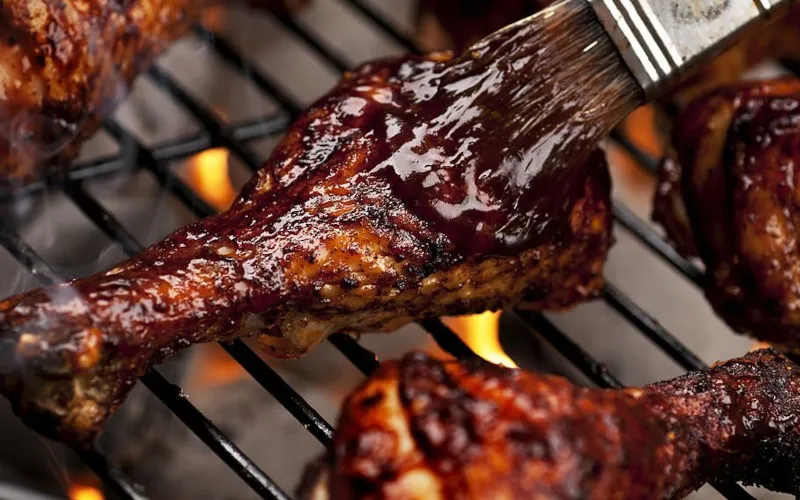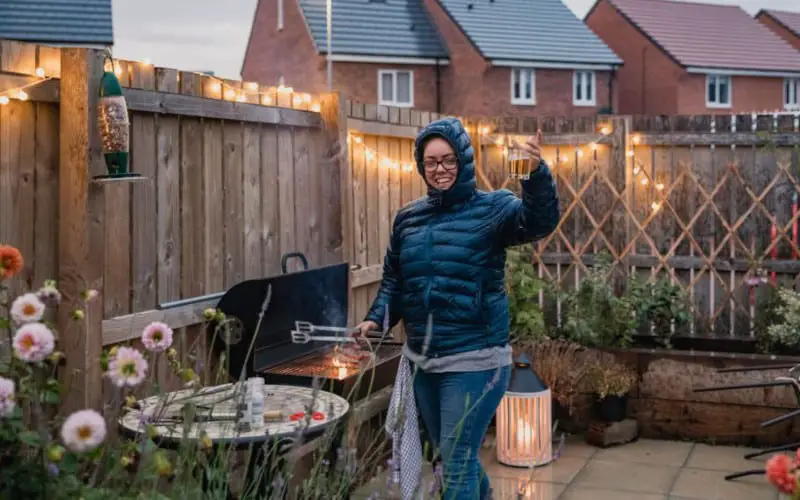There’s nothing like the smell of smoke and the sizzle of meat hitting a hot grill. But, as we all know, getting that grill going can sometimes be a real pain.
Have you ever found yourself frustrated, trying to light your charcoal for what seems like ages? I know I have. I wanted to share my top 9 reasons why your charcoal might not be lighting.
Whether you’re a seasoned griller or a beginner, these tips will help you get the fire blazing and your food cooks quickly.
So, let’s dive in and figure out why your charcoal won’t light!
10 Reasons Why Your Charcoal Won’t Light
1. Damaged Charcoal

I’ve found that charcoal won’t light because it’s been damaged. If you’ve accidentally dropped or banged your bag of charcoal, chances are some of the briquettes have broken into smaller pieces.
These small pieces can clog up the airflow and prevent proper igniting. Another way charcoal can get damaged is if it gets wet. Moisture can cause the charcoal to clump together and lose its porousness, making it difficult to ignite.
To prevent this from happening, I always make sure to handle my charcoal with care and store it in a dry place. Taking these precautions ensures that my charcoal is in good shape and ready to light when needed.
2. Moisture Content
Another reason I’ve found that charcoal might not be lighting is due to moisture content. If you’ve been storing your charcoal in a damp area, it’s likely absorbed moisture from the air.
This can cause the briquettes to stick together and make it more difficult to light. One tip I use is to store my charcoal in a dry, ventilated area.
This helps to prevent moisture buildup and keeps the briquettes loose and porous, making them easier to light.
Additionally, I try to wait until the weather clears up on rainy or humid days before attempting to light my charcoal. By keeping an eye on the moisture content of my charcoal, I can ensure that it’s always ready to light when I need it.
3. Improper Airflow
Another reason my charcoal may not be lighting is due to improper airflow. If enough oxygen gets to the briquettes, they won’t ignite properly. Sometimes when I’m in a hurry, I’ll pile my charcoal on the grill and light it up, which often results in poor airflow.
To get the best airflow, I arrange my charcoal in a pyramid shape with the smaller pieces on the bottom and the larger pieces on top. This allows for better air circulation and helps my charcoal light more easily.
Additionally, I always leave space between the briquettes so air can flow freely. Attention to airflow ensures that my charcoal ignites quickly and evenly for a perfect grilling experience.
4. Low-Quality Charcoal
Another I’ve found that my charcoal is not lighting is due to low-quality charcoal. Low-quality is often made from scrap or other materials and doesn’t burn as cleanly or evenly as high-quality charcoal.
To avoid this issue, I always purchase high-quality charcoal from natural hardwoods like oak or hickory. These types of charcoal tend to burn hotter and longer, giving me a better grilling experience overall.
Additionally, I checked the label on my charcoal bag to ensure no added chemicals or fillers could prevent it from igniting properly.
By choosing high-quality charcoal, I can be confident that my grill will light up quickly and produce great results every time.
5. Using Lighter Fluid Improperly
Another reason I’ve found that my charcoal won’t light is the improper use of lighter fluid. Using too much lighter fluid can cause a flare-up and burn off the lighter fluid before igniting the charcoal fully.
On the other hand, if you don’t use enough lighter fluid, the charcoal may not ignite at all. To use lighter fluid properly, I always follow the instructions on the bottle carefully.
I only use a small amount of lighter fluid, usually no more than 1/4 cup per pound of charcoal, and apply it evenly throughout the coals. I let the lighter fluid soak into the charcoal for a few minutes before lighting it up.
Using lighter fluid properly ensures that my charcoal ignites evenly without any dangerous flare-ups.
6. Using Old Lighter Fluid
Another reason I’ve found that my charcoal won’t light is because I use old lighter fluid. Over time, lighter fluid can break down and lose its effectiveness.
If you’re using older fluid, it might not ignite the charcoal as quickly or evenly as fresh fluid. To avoid this issue, I always check the expiration date on my lighter fluid before using it.
If it’s expired, I replace it with a new bottle. Additionally, I try to use my lighter fluid within a few months of opening it to ensure that it’s still fresh and effective.
Using fresh, lighter fluid will help me ensure that my charcoal lights up quickly and produces great results consistently.
7. Windy Conditions
Another reason I’ve found that my charcoal won’t light is due to windy conditions. A strong breeze blowing can blow out the flames before they can ignite the coals fully.
If possible, I will try to find a sheltered spot to set up my grill to avoid this issue. If I can’t find a sheltered spot, I’ll try to use a windbreak or shield to protect the grill from the wind.
Additionally, I make sure to keep the lid closed on my grill as much as possible while the charcoal is lighting. This helps to trap the heat and prevent the wind from blowing out the flames.
To ensure that my charcoal lights up quickly and evenly, even on a breezy day, I should be mindful of windy conditions.
8. Using Insufficient Amounts of Charcoal
Another common reason I’ve found that my charcoal won’t light is due to using insufficient amounts of charcoal. If there isn’t enough charcoal in the grill, it may not generate enough heat to ignite the coals properly.
To avoid this issue, I always use enough charcoal to fill the bottom of the grill evenly. I also try to use a chimney starter to light the charcoal before adding it to the grill. This ensures that the coals are evenly lit and helps to generate more heat overall.
If I use enough charcoal, I can be assured that my grill will ignite rapidly and deliver excellent outcomes consistently.
9. Worn Out Lighter or Matches
Another reason I’ve found that my charcoal won’t light is due to using a lighter or matches that are low on fluid or worn out. If the lighter or matches don’t produce a strong flame, it can be difficult to ignite the charcoal.
To avoid this issue, I always use a lighter or matches that are in good condition and have enough fluid. I will have a spare lighter or matches with me as a backup.
If I’m using matches, I’ll use long-handled ones to avoid burning my fingers. By using a reliable lighter or matches with a strong flame, I can be confident that my charcoal will ignite easily and produce great results every time.
Conclusion
There are several reasons why my charcoal may not be lighting properly. It could be due to improper airflow, low-quality charcoal, using lighter fluid improperly or using old lighter fluid, windy conditions, or using insufficient charcoal.
To ensure that my charcoal lights up quickly and evenly every time, I follow a few key tips:
- Arrange my charcoal in a pyramid shape with the smaller pieces on the bottom and the larger pieces on top.
- Use high-quality charcoal made from natural hardwoods.
- Use lighter fluid properly and within its expiration date.
- Find a sheltered spot to set up my grill or use a windbreak.
- Use enough charcoal to fill the bottom of the grill evenly.
By following these tips, I can be confident that my charcoal will ignite easily and produce great results whenever I fire up the grill.






